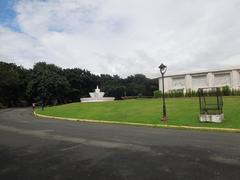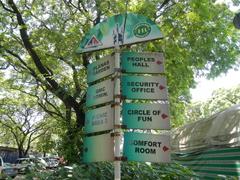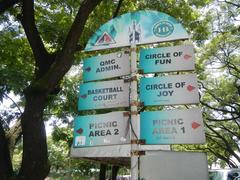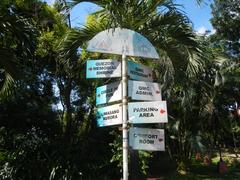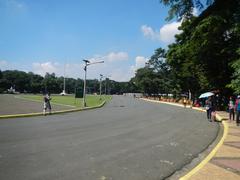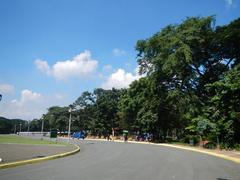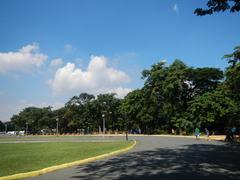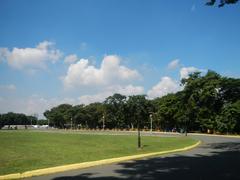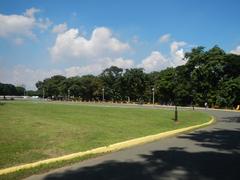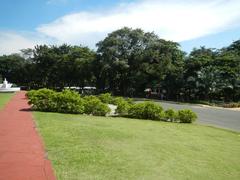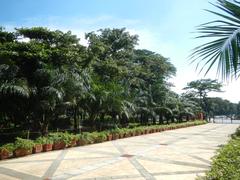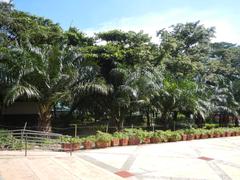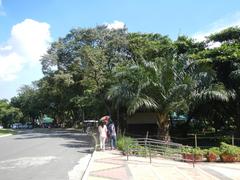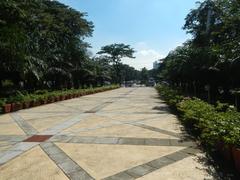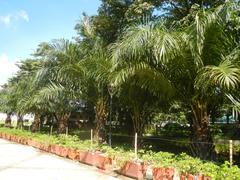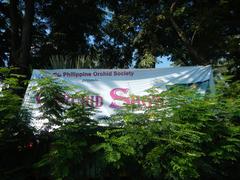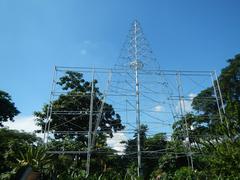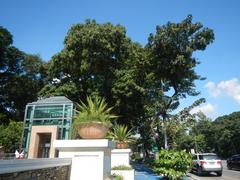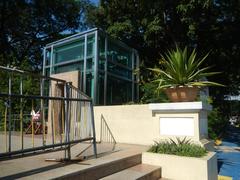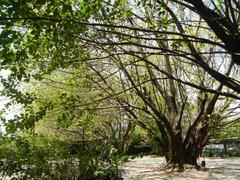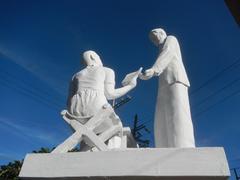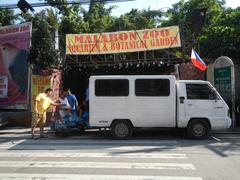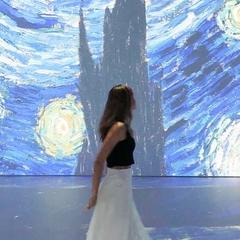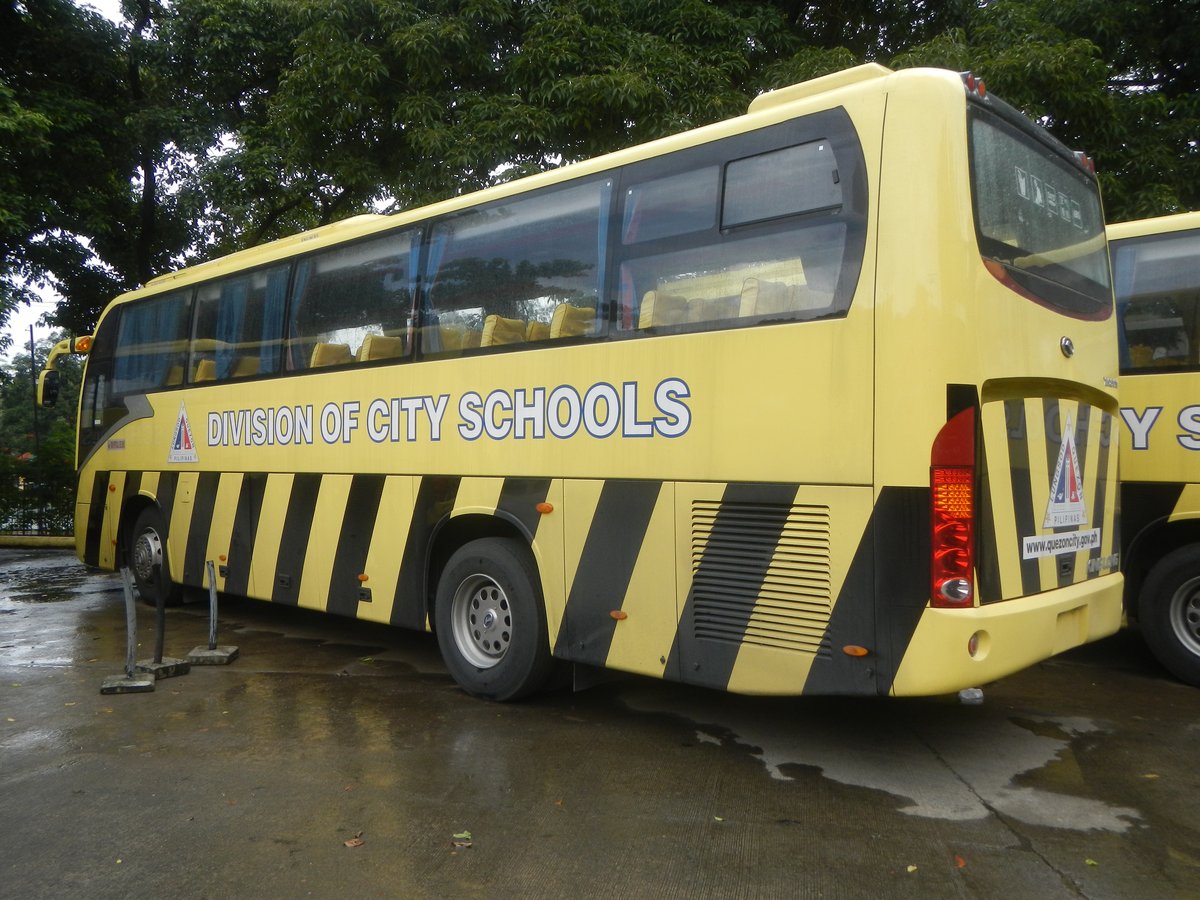
Comprehensive Guide to Visiting Quezon Memorial Circle, Quezon City, Philippines
Date: 16/08/2024
Introduction
The Quezon Memorial Circle in Quezon City, Philippines, is a multifaceted landmark that combines historical, cultural, and recreational elements, making it a significant destination for both locals and tourists. Initially conceived as the site for the National Capitol, the park’s purpose evolved post-World War II to honor President Manuel L. Quezon, a key figure in Philippine history. The Quezon Memorial Shrine, an art deco monument designed by Filipino architect Federico Ilustre, serves as the park’s centerpiece, symbolizing the nation’s respect for its past leaders (Wikipedia). Over the years, Quezon Memorial Circle has transformed into a vibrant urban space that not only commemorates history but also provides a sanctuary for leisure and community activities. Managed by the Quezon City government since 2008, the park has adapted to meet contemporary needs, including serving as a critical resource during the COVID-19 pandemic (Wikipedia). This guide aims to provide an in-depth look at the park’s history, attractions, visitor information, and future developments, ensuring a comprehensive understanding for anyone planning to visit.
Table of Contents
- Introduction
- History and Significance
- Cultural and Recreational Hub
- Visitor Information
- Future Developments
- FAQ
- Conclusion
History and Significance
Origins and Initial Purpose
The Quezon Memorial Circle, located in Quezon City, Philippines, was originally conceived as the site for the National Capitol. This location was part of a broader plan for a National Government Center (NGC) that aimed to consolidate the three branches of the Philippine government—legislative, executive, and judicial—into a single area. The NGC was to be situated around the Elliptical Road and the Quezon City Quadrangle, which includes the North, South, East, and West Triangles. The cornerstone for the National Capitol was laid on November 15, 1940, but construction was halted due to the outbreak of World War II, leaving only the foundations completed (Wikipedia).
Post-War Developments
After World War II, President Sergio Osmeña issued an executive order to create a Quezon Memorial Committee tasked with raising funds by public subscription to erect a memorial for President Manuel L. Quezon. A national contest was held to design the Quezon Memorial Project, and the winning entry was by Filipino architect Federico Ilustre. The Quezon Memorial Shrine, an art deco masterpiece, was constructed in the 1950s and stands as the centerpiece of the park (Vigattin Tourism).
Architectural Significance
The Quezon Memorial Shrine is a towering monument that stands 66 meters high, symbolizing the age of President Quezon at his passing. The shrine consists of three vertical pylons, each topped with a mourning angel holding a sampaguita wreath, the national flower of the Philippines. These angels represent the three main islands of the Philippines: Luzon, Visayas, and Mindanao. The monument also features a spiral staircase leading to an observation deck that offers panoramic views of the city (Beauty of the Philippines).
Role in Urban Development
In the 1980s, the architecture firm led by Francisco Mañosa developed a master plan for the park, reflecting its evolving role as a central urban space. On July 1, 2008, the Quezon City government took over the management of the park from the Quezon City Parks Development Foundation (QCPDF), which had been managing it since September 27, 1988. During the COVID-19 pandemic, the park adapted to meet critical needs by providing makeshift dormitories for health workers from nearby hospitals and serving as a testing site (Wikipedia).
Cultural and Recreational Hub
Visitor Attractions
The park offers a wide range of attractions and activities for visitors. The Quezon Memorial Shrine itself is a must-visit, featuring a museum that showcases personal memorabilia of President Quezon, including his clothing, books, and other personal items. The museum provides interactive exhibits and displays that educate visitors about Quezon’s life, achievements, and the historical context of his presidency (Island Times).
Recreational Facilities
Quezon Memorial Circle is not just a historical site but also a recreational haven. The park features biking and jogging paths, a fitness center, playgrounds, and a small amusement park called Circle of Fun. There is also a boating area on the lagoon and a weekend market offering organic produce and local handicrafts. The park’s gardens and landscaped areas provide a serene environment for picnics and leisurely strolls (Forever Vacation).
Community and Environmental Impact
The Quezon Memorial Circle serves as a vital green lung in the urban environment, providing residents and visitors with a space for relaxation, exercise, and an escape from the hustle and bustle of city life. It plays a crucial role in the community by hosting various public events and activities, making it a cultural hub and a place of collective memory for the nation. The park’s transformation and continuous improvements have made it a cherished gem in Quezon City, attracting an average of 8,000 visitors daily, with weekend figures soaring to around 12,000 (Beauty of the Philippines).
Visitor Information
Visiting Hours
The Quezon Memorial Circle is open daily from 5:00 AM to 10:00 PM, providing ample time for visitors to explore its various attractions and facilities.
Tickets
Entrance to the Quezon Memorial Circle is free. However, some attractions within the park, such as the museum and amusement park rides, may have separate fees.
Travel Tips
- Getting There: The park is accessible via public transportation, including buses and jeepneys. The upcoming Quezon Memorial MRT station on the MRT Line 7 will further enhance accessibility.
- Nearby Attractions: Visitors can also explore nearby attractions such as the Ninoy Aquino Parks and Wildlife Center and the Quezon City Experience (QCX) museum.
- Best Time to Visit: Weekdays are less crowded, making it easier to enjoy the park’s amenities.
Future Developments
The Quezon Memorial Circle is set to become a pivotal point in the Manila Metro Rail Transit System with the construction of the Quezon Memorial MRT station, which will be an underground facility on the approved MRT Line 7. This development is expected to further increase the accessibility and popularity of the park, making it an even more integral part of the city’s landscape (Wikipedia).
FAQ
- What are the visiting hours for Quezon Memorial Circle?
- The park is open daily from 5:00 AM to 10:00 PM.
- How much are tickets for Quezon Memorial Circle?
- Entrance is free, but some attractions may have separate fees.
- What are the main attractions at Quezon Memorial Circle?
- The Quezon Memorial Shrine, biking and jogging paths, playgrounds, and Circle of Fun amusement park.
- Is Quezon Memorial Circle accessible by public transportation?
- Yes, it is accessible via buses and jeepneys, with an upcoming MRT station.
- Are there any nearby attractions?
- Yes, nearby attractions include the Ninoy Aquino Parks and Wildlife Center and the QCX museum.
Conclusion
Quezon Memorial Circle stands as a testament to the rich historical and cultural heritage of Quezon City and the Philippines. From its origins as a planned National Capitol site to its current role as a vibrant urban park, the Circle reflects the resilience and adaptability of the Filipino spirit. The park offers a blend of historical monuments, recreational facilities, and community engagement opportunities, making it a must-visit destination. Continuous improvements and future developments, such as the upcoming Quezon Memorial MRT station, promise to enhance its accessibility and appeal even further. Whether you’re a history enthusiast, a fitness lover, or simply looking for a peaceful retreat in the city, Quezon Memorial Circle has something to offer. For the latest updates, consider following related social media channels or downloading the mobile app Audiala (Wikipedia, Business Mirror).
References
- Wikipedia, n.d., Wikipedia contributors. Quezon Memorial Circle
- Beauty of the Philippines, n.d., Author unknown. Quezon Memorial Circle
- Vigattin Tourism, n.d., Author unknown. Quezon Memorial Circle: A Famous Historical Park in Quezon City
- Business Mirror, 2023, Author unknown. Revitalized Circle of Life: Why Quezon Memorial Circle is Now Luring More Tourists
- Island Times, n.d., Author unknown. Quezon City Memorial Circle Guide: Attractions & Activities
- Forever Vacation, n.d., Author unknown. Quezon Memorial Circle
- GMA Network, n.d., Author unknown. You Can Visit These Museums for Free at the Quezon Memorial Circle
- Lonely Planet, n.d., Author unknown. Quezon Memorial Circle
- Pineqone, n.d., Author unknown. Quezon Memorial Circle
- Trip.com, n.d., Author unknown. Quezon Memorial Circle
- Traveloka, n.d., Author unknown. Quezon Memorial Circle
- Wanderlog, n.d., Author unknown. Quezon City

